Re-imagining proteomics for developing precision medicine biomarkers of the innate immune response in SARS-CoV-2
Background
The innate and adaptive immune system work in concert to respond to the Covid-19 virus. When this rhythm is disrupted, it can lead to unhampered viral spread and hyper-inflammation.
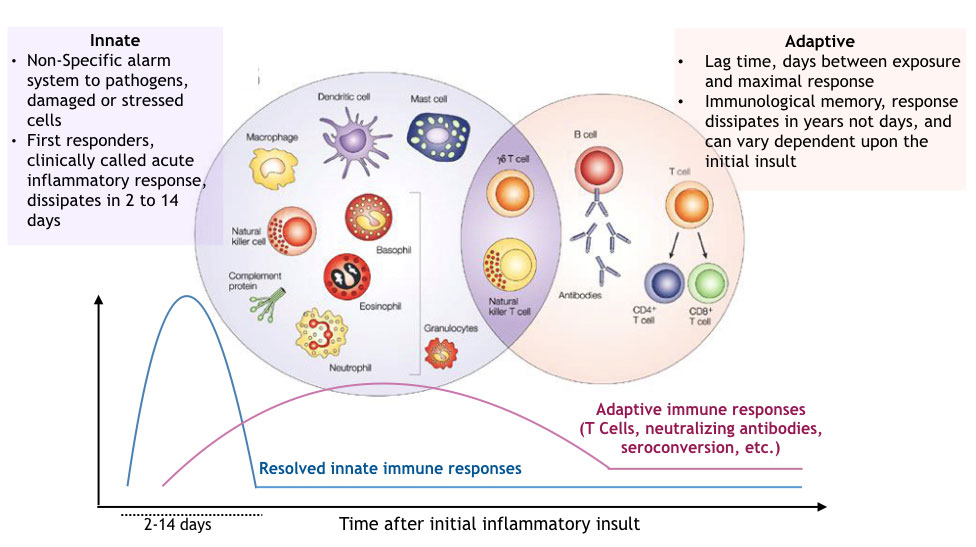
There in increasing evidence associating severe COVID-19 disease with an overly exuberant
innate immune response. When functioning properly, the purpose of the innate immune response is to immediately prevent the spread of pathogens throughout the body, and to initiate the second line of defense - the adaptive immune response (T Cells, seroconversion, neutralizing antibodies, etc.). So a normal resolution of the innate response leads to a productive handoff to the adaptive response. Conversely, an unresolved innate response may delay or even paralyze a suitable adaptive response. Many investigations support such a premise for severe COVID-19 disease.
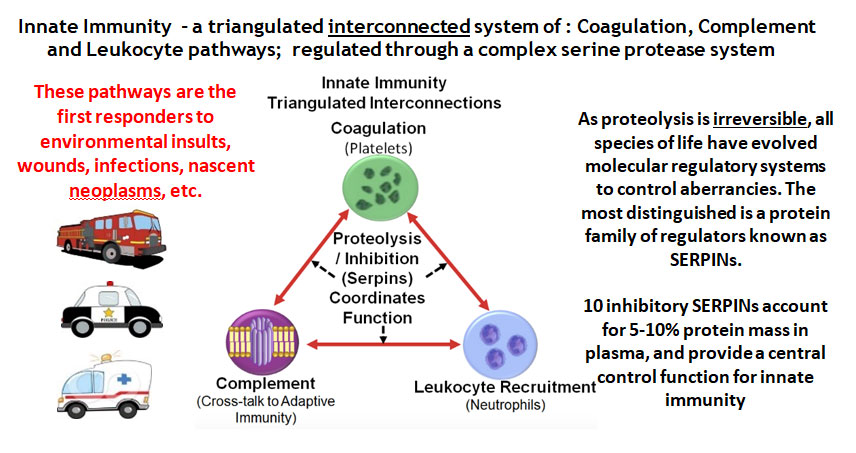
Furthermore, Transmembrane serine proteases also play a major role in SARS-CoV-2 host infectivity, as they prime the spike (S) protein of the virus to engage with the host’s ACE2 receptor for cell entry. Both endogenous and exogenous inhibitors are under investigation to understand and possibly modulate viral cell entry through this proteolytic mechanism. Thus, it is important to characterize the functionality of endogenous inhibitors - especially the Serpin family, which includes Alpha-1-Antitrypsin (Serpin A1) and Antithrombin III (Serpin C1) amongst others, as they cross regulate both the innate response and viral cell entry.
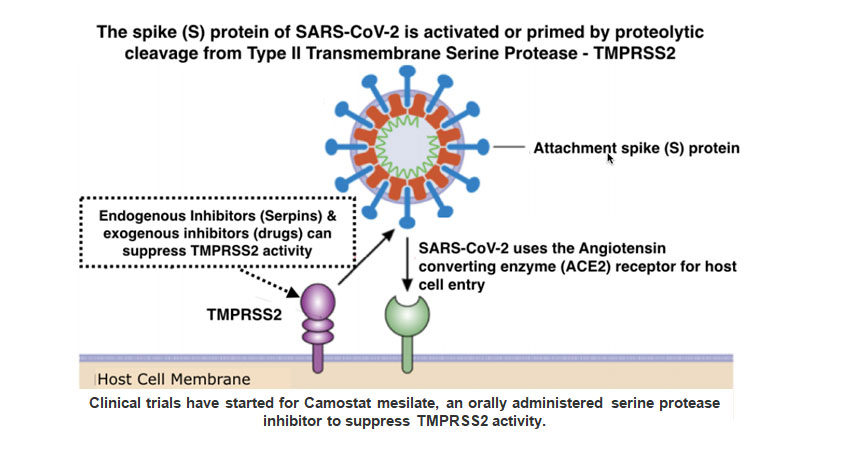
CHALLENGE
So while Serpin inhibitors play an essential regulating role for proteases in blood, functional measurements for them are inherently challenging.
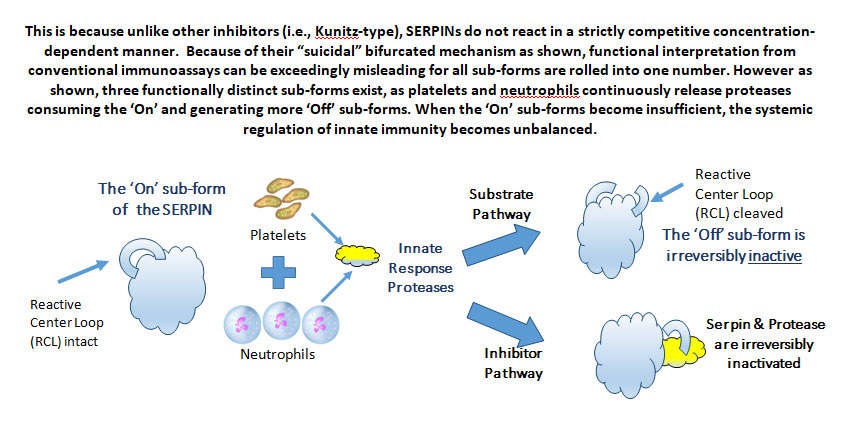
SOLUTION
A proteomic solution is to report peptide features, derived from ex vivo proteolysis that can ascertain whether the Serpin is Active (intact RCL) or not (cleaved RCL). This data can be simply acquired through Liquid Chromatography coupled to Mass Spectrometry (LC-MS/MS).
An unbalance proteolytic state can have important disease consequences. Until now, it has
not been possible to measure the relative functional abundancies of Serpins for differential comparison proteomic analysis. Our new patent pending proteomic counting method of SERPIN function can now report the balance between ‘On’ and ‘Off’ sub-forms, and consequent dysregulation of proteolysis. From this data, new insights will be gained for therapeutic modulation and precision medicine.
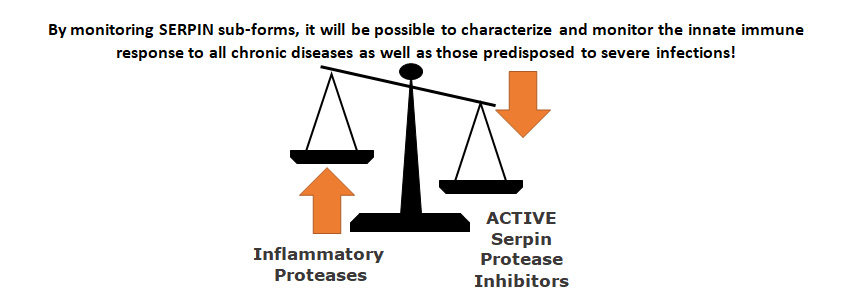
- 90% of metastatic patients exhibit coagulation abnormalities
- Coagulation and Complement are interconnected cascades functionally activated by proteolysis
- Functionally active Serpins maintain proteolytic homeostasis providing central control to innate immunity
- Progressive loss of functionally active Serpins results in dysregulation of innate immunity pathways, and subsequent unresolved proteolysis can lead to severe acute disease, example - thrombosis in Covid-19
Our new whitepaper describes how BSG's products and methods can be used to characterize the innate immune response from peripheral blood. Most notably, we present a model of innate immunity which describes a 'protease storm' released by inflammatory cells, which when not sufficiently regulated alters homeostatic balance of proteolysis, which can lead to severe disease.
Key messages described in the whitepaper include:
- For SARS-CoV-2, proteomic information can be derived from all blood compartments
- Innate vs. Adaptive Immunity & the Unmet Need for Proteomic Information
- Unleashing the Power of Proteomics To Better Understand the Innate Immune Response to Infectious and Non-infectious Inflammatory Stimuli
- How Transmembrane serine proteases play a major role in SARS-CoV-2 host infectivity
- A family of protease inhibitors (SERPINs) is critical in SARS-CoV-2 but functional measurement is challenging
- Why the protease/inhibitor balance matters!
- How measurements of SERPIN function can help stratify high risk patient populations
- The cellular tug-of-war within the innate response for control of Complement
- An oscillation model of Complement regulation that aligns with clinical data
- How similar patterns of innate immunity dysfunction impacts many diseases including cancer
- And most importantly, here's how BSG can help in proteomic analysis of the innate immune response!
Click image to download whitepaper...
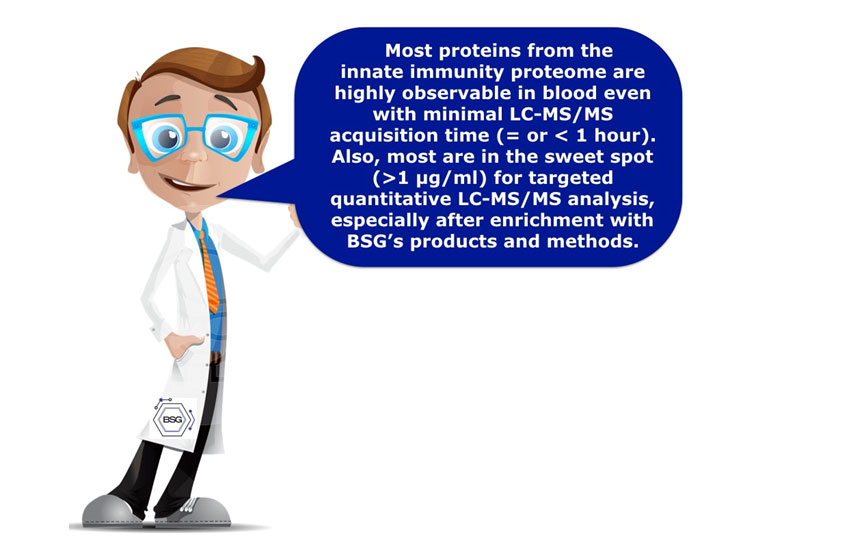
Other Resources
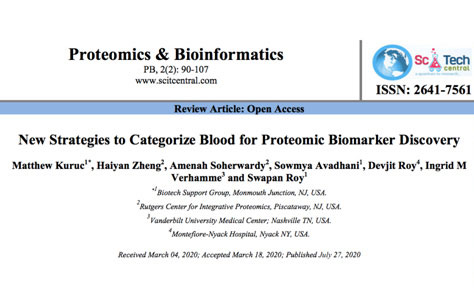 
|